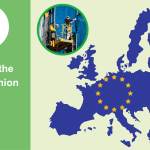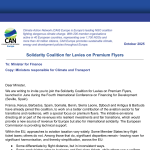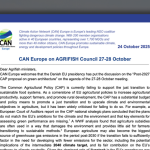The carbon border adjustment mechanism (CBAM) is one of the building blocks negotiated between 2021 and 2023 under the last EU cycle. Its implementation aims at staying the course with the broad policy toolbox and objectives put forward in the past mandate, as stated by the newly elected Commission, especially in combination with the revised European Emissions Trading System (EU ETS).
CAN Europe welcomes the opportunity to contribute to this public consultation regarding the merits of a CBAM scope extension to downstream products, a revision of the rules to account for electricity imports and the potential of additional measures to prevent circumvention. The consultation is mostly targeted at stakeholders manufacturing or importing CBAM goods. Yet, we believe the reiteration of a few principles from civil society’s side is critical in the lead-up to the legislative proposal, to provide balanced views regarding the content of the latter and to ensure the initiative does not compromise the overall EU climate and just transition goals and is evidence-based.
Our response is built around 5 key principles:
- The CBAM should maintain a multifaceted approach, blending several objectives in a single tool and not turn into a pure protectionist and trade defense measure.
- Any amendment to the current CBAM mechanism should be backed by evidence and transparent data showing the merits of an adjustment and an assessment reflecting its impacts on the Regulations initial goals, including on climate protection.
- Amending the CBAM should not result in further phase-in delays of the mechanism.
- The CBAM amendment should not reassess the gradual phase-out timeline of ETS free allocations, starting from 2026 towards 2034.
- CBAM must evolve to serve global climate equity, transparency, and participation. Beyond this short summary, we thank you for the consideration of the attached document, outlining the reasoning behind those 5 principles, and remain available for further discussions.
Read the whole CAN Europe submission: European Commission / PDF



